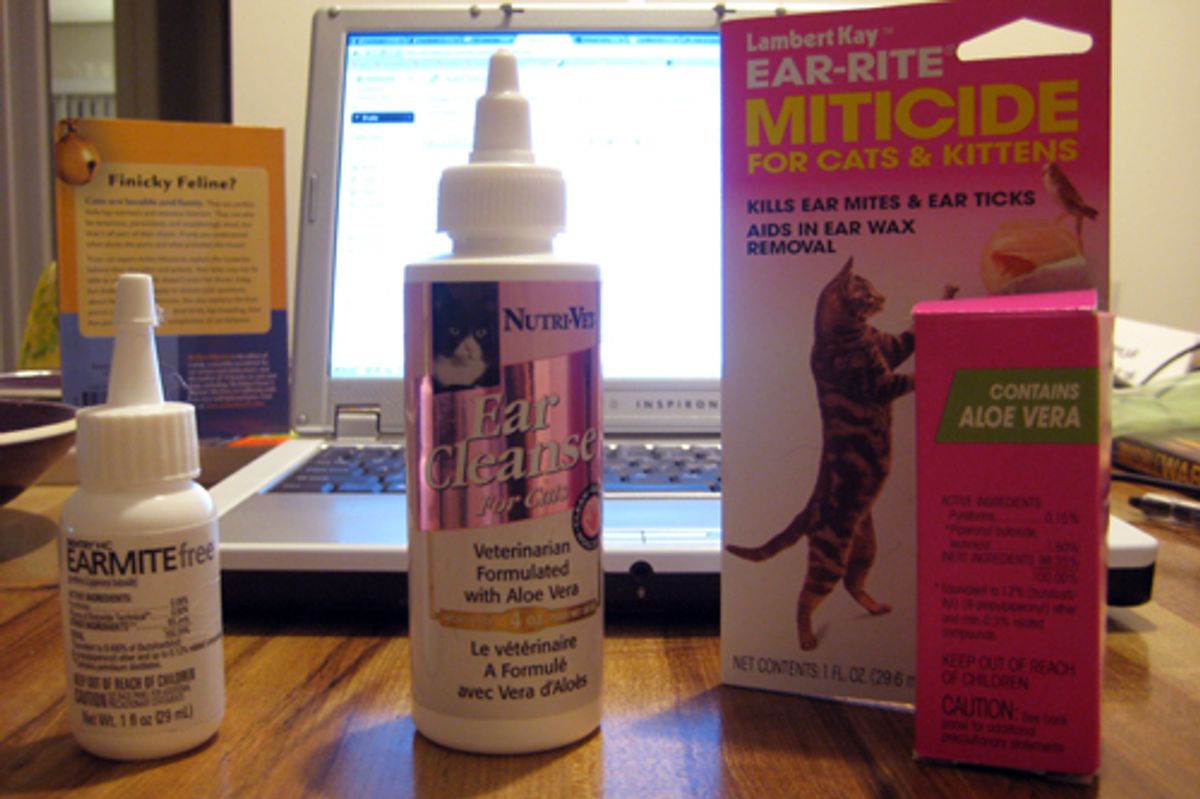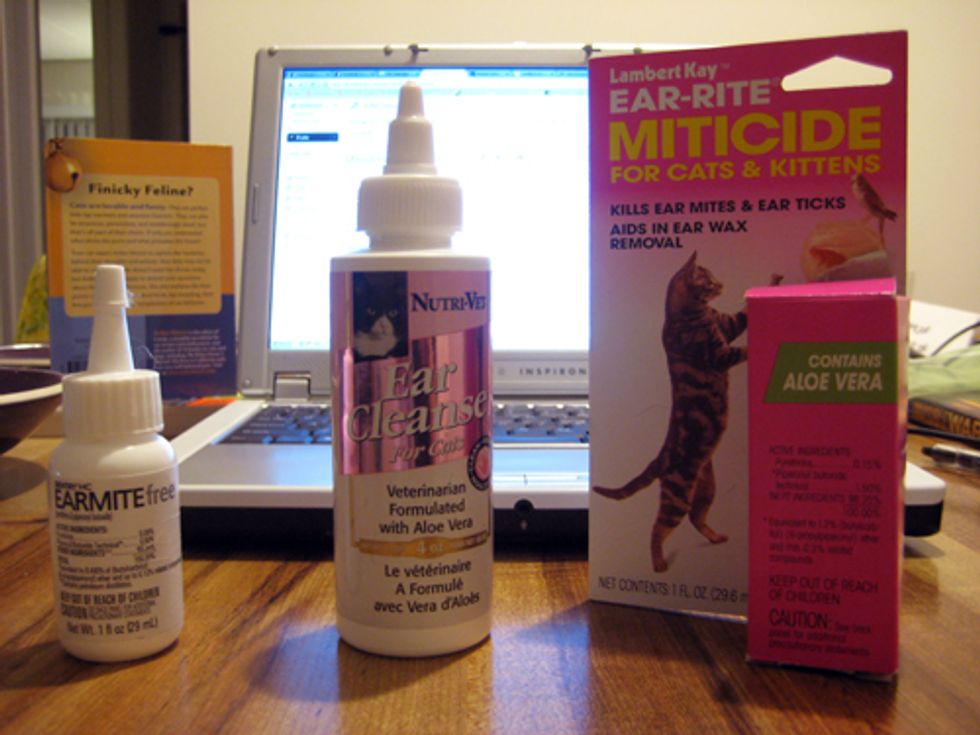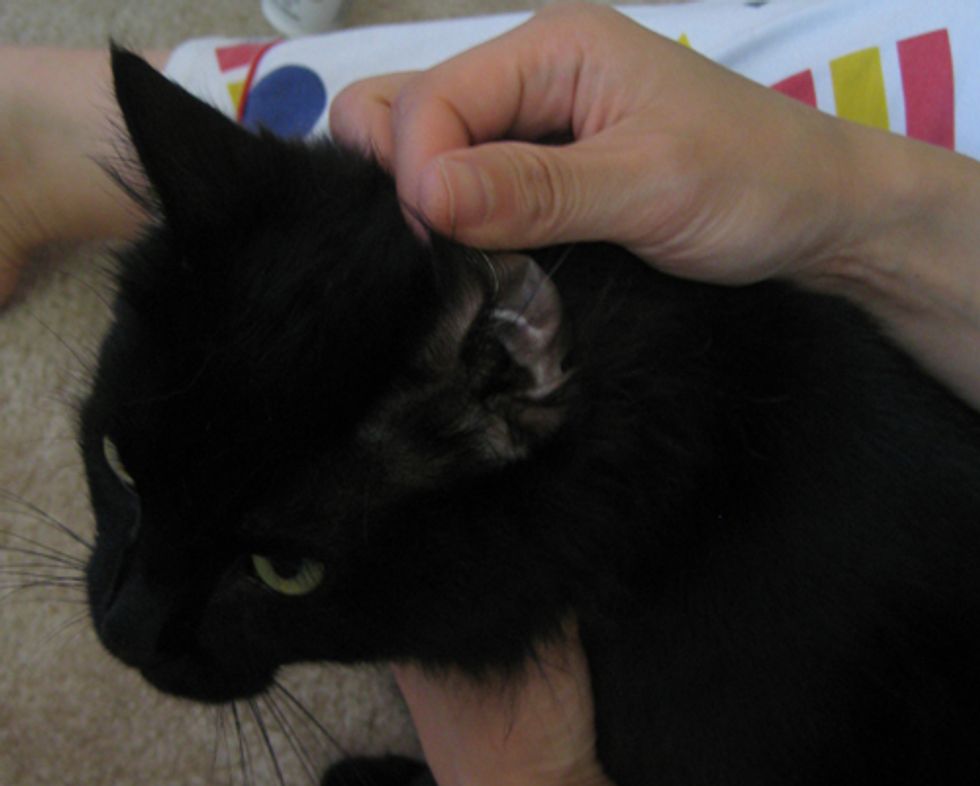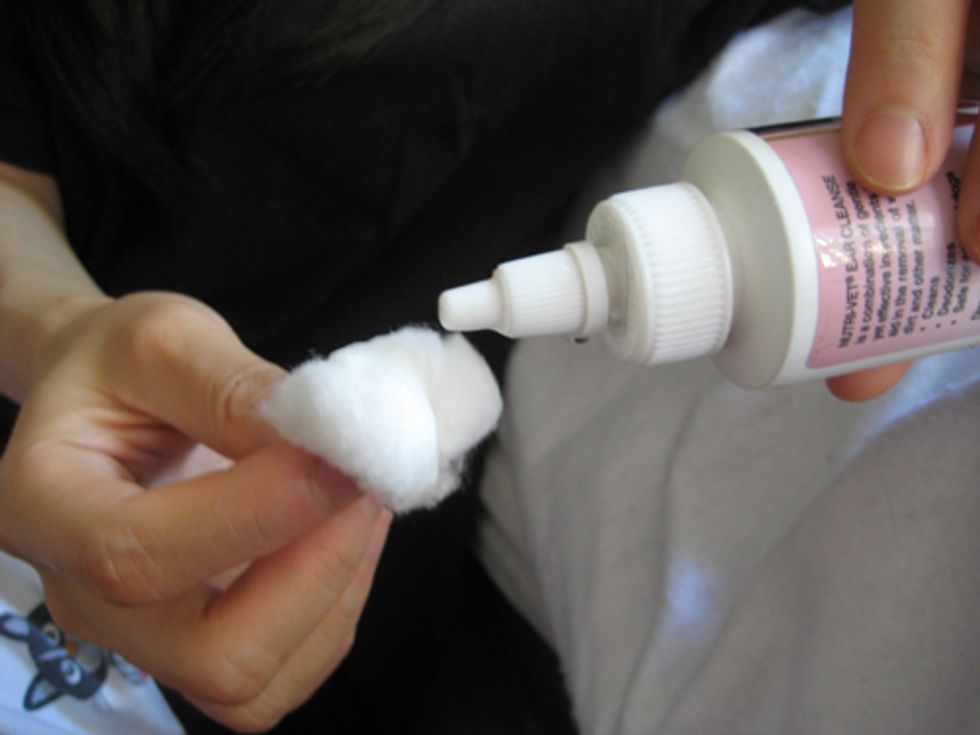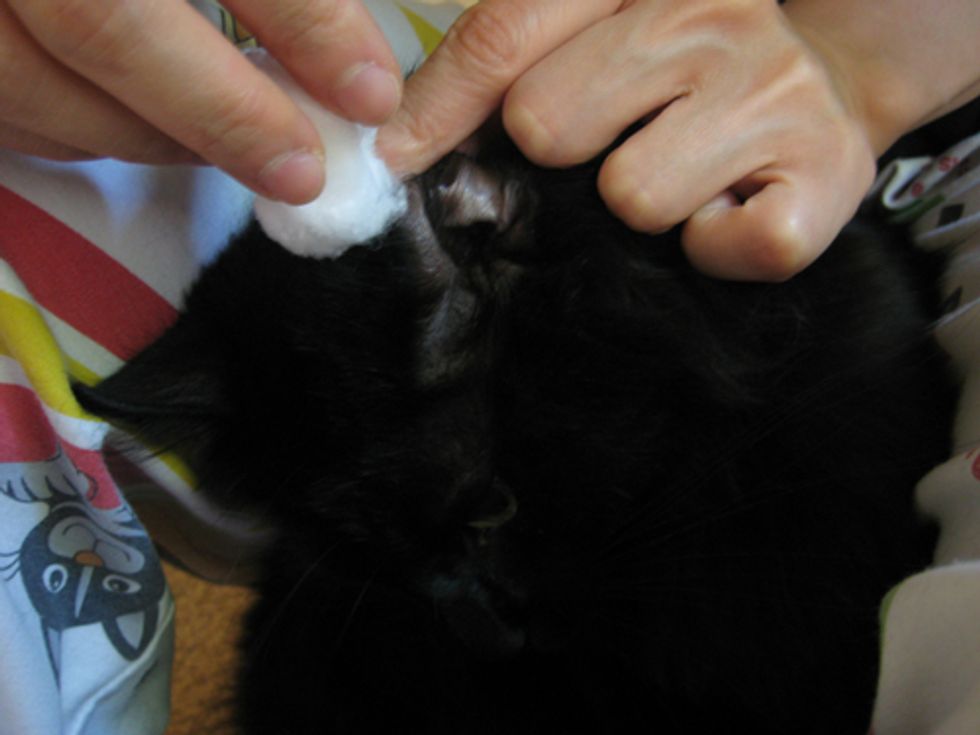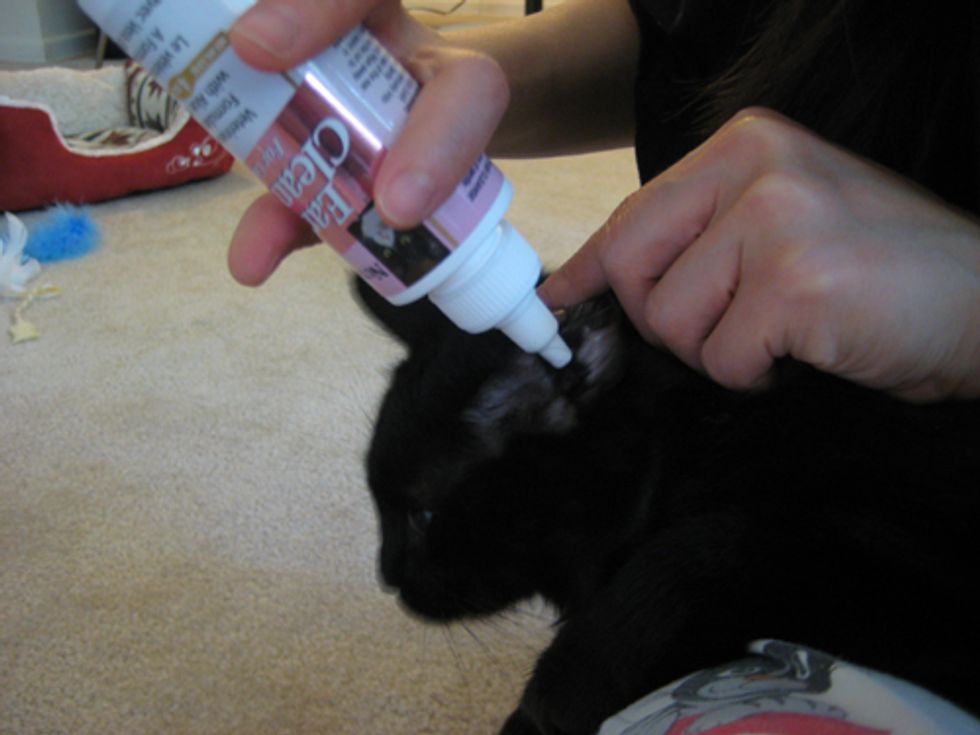Jackie and Shadow, the 2 cats we adopted 2 weeks ago were infected with ear mites. Shadow's condition was not too bad at all, but Jackie was showing a lot of signs such as scratching and shaking his head. We had Jackie's ears treated at the vet, but the follow-up work became crucial in order to make sure the ear mites were thoroughly eradicated and would not reoccur.
We have purchased 3 different ear cleaning solutions for the 3 guys. Flip does not have any issues with his ears, so preventative care will suffice. We have got him an ear cleansing solution from Nutri-Vet. It is veterinarian formulated with aloe vera. Jackie and Shadow need something that can kill ear mites, so we have got Lambert Kay's Ear-Rite Miticide for cats & kittens at Petsmart.
Before you use the solution to clean your cat's ears, inspect the inside of the ears and locate the areas where ear mites or dirt reside.
If you are going to do it on the floor, place your cat in between your legs, have your cat face away from you. That way if your cat wants to back away, it will back away into you. You can utilize your legs to gently secure the cat, so your cat will not jump out during the process. If you are going to do it on a table, use the same technique to have your cat face away from you. Instead of using your legs, drape your arms across the cat's body to secure the cat's position. Hold the cat's head with your left hand, press the ear flap against the head, so the ear canal is open.
Since you have checked the ears, you know where the problem spots are. Use a cotton ball, wet it with an ear solution. It's important to clean out all the gunk before medicating the ear canal. If your cat's ears are filled with ear mites, you can apply some solution directly into the ear canal and massage it for one to two minutes before cleaning. It will soften the dirt and make it easier to clean up.
Wipe off all the dirt accumulated in the ear. Do not go too deep down the ear canal. Though some people use Q-tips for places that are hard to reach, I would not recommend it. Many cats do not like to have their ears cleaned, so they often struggle to get away. It takes some restrain to keep the cat in position. With that said, it is very easy to accidentally hurt the ear with a sudden or unexpected jump or turn. I use a cotton ball and take out a pinch of it to roll it into a compact thread. It is a good alternative to a Q-tip, though you need to be dextrous with your fingers to get it into the right area.
After you are done with cleaning, it is time to apply medicine into the ears. If your cat does not have ear mites, you can use the ear cleansing solution again for this step.
Take the bottle of solution and point the tip toward the ear canal. You want to squeeze the solution into the ear canal without poking it. It is important that your cat is not panicking while you are doing it. Squeeze the right amount according to the instructions on the label.
Your cat will quickly shake out much of the solution you put in. Let your cat do that and wait till it's done.
Then close the ear flap with your fingers and give it a good massage. Your cat likes this part, so massage the ears for about one to two minutes.
Take another cotton ball and wipe off any excess solution around the outer ear.
Tip: If your cat starts to panic, take a breather, speak to your cat with a soft tone and pet your cat. It will sooth the cat and assure him that you are right there for him. Once the cat has calmed down, you can continue the procedure.
It is a good habit to clean your cat's ears about once a week in order to prevent ear mites, ear ticks or related infections. For ear mites, your cat would need more frequent treatment according to your vet's advice.
Note: It is imperative to consult your vet before any treatment you will conduct on your cat. This article is served only for information purposes. You should always check with your vet before treating your cats.

